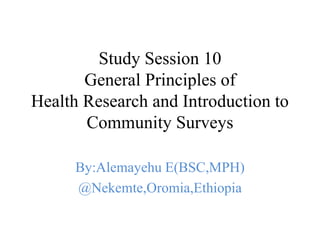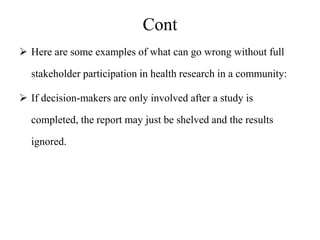This document provides an overview of health research and community surveys. It defines health research as the systematic investigation of health problems to improve solutions. There are two main types of research: basic research which expands knowledge, and applied research which solves practical problems. Community surveys collect demographic and health data from households to understand factors influencing health. The document outlines best practices for health research including stakeholder participation and producing actionable results.



























